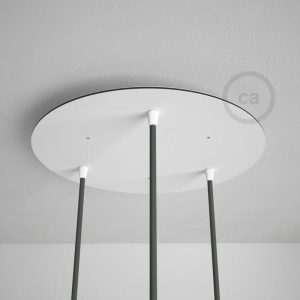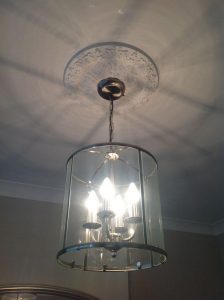A ceiling rose is an attractive finish used to keep light fittings neat when they feature in an obvious location in the centre of a ceiling. Commonly seen in older properties, the ceiling rose is enjoying a resurgence in popularity. Many new builds are finished with ceiling roses already in place, although older properties might find that their original ceiling roses have been removed. A new rose can be purchased with ease so if you need to replace or reinstall, get your ceiling rose from https://www.creative-cables.co.uk/2648-ceiling-roses
Finding the right size
There is no right or wrong, it’s a matter of personal taste but a general rule of thumb is to find one with the right proportions for both the size of the room and the height of the ceiling. A property with a lower ceiling would benefit from a smaller, simpler ceiling rose design. Modern homes with a minimalist design also look great with sleek, simple ceiling rose styles. A property that benefits from high ceilings can afford to go much bigger and more ornate with their choice of rose. Another general guideline is that a ceiling rose shouldn’t dominate the light fitting but should always seek to complement it instead.
Which style to choose?
There is no limit except your imagination when it comes to the wide range of styles available. The style you choose will depend on your existing décor and current decorative features , but ceiling roses come in all shapes and sizes, from flat circles to flowery ornate plasterwork.
Those living in a period property may already have cornicing, corbelling or coving to consider. With so many styles available though, it should be straightforward to find one that is a good match. If your ceiling has no coving or plain coving, you have more freedom in your style choice. Consider any decorative or architectural features that you already have, such as a period fireplace, for example. A contemporary rose might not be the best choice here, and a more traditional and ornate rose might be a better-looking choice.
What else can they be used for?
You might be surprised to learn that you don’t always need to have your ceiling rose on the ceiling! There are varieties that can be fitted to a wall instead or even as part of feature combined with panel mouldings, for example. For large ceiling spaces, several roses can be incorporated as a unique piece of decorative art.
Restoring period ceiling roses
Many period properties will have been through stages of modernisation over the decades and original decorative plasterwork may have been stripped away. Many homeowners wish to return their property to its former glory and respect the heritage, so if your ceiling roses have gone, it’s fairly easy to remedy that. If there are similar homes nearby, ask if they have their original roses to give you an idea of how to stay faithful to the period. Alternatively, do a little online research and you should get some idea of the decorative style for that period.









